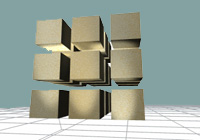|
The task of this tutorial is to use the model provided with the tutorial
to create two images, one demonstrating symmetry, the other demonstrating
asymmetry. From the predefined
view called "symmetry" your object should appear as an interesting
symmetrical composition. From the predefined view called "asymmetry"
your object should be an interesting asymmetrical composition. There
are two ways to do this exercise.
- The first is to make both images from the same object.
- The second is to make two different objects, one for each
view. If you do this, you will have to make a duplicate copy of all
the model objects within the same FormZ file.
The first is more fun from a design point of view as you have to consider
the effect that each change to your design will have on both views.
Both approaches are acceptable for this tutorial.
The object provided is an arrangement of rectangular cuboids organised
around a 3x3x3 grid.
First is a grid, which defines a 3x3x3 skeleton to which the rest
of the forms relate. In this grid, made up of lines, there are points
where the lines cross, faces formed with lines as their boundaries and
volumes formed with faces bounding them.
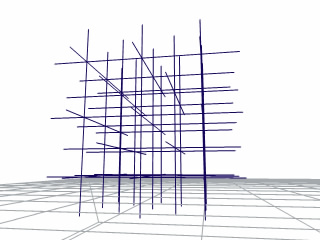
Grid
Second is a set of cuboids, each occupying a place in the skeleton
grid. There are big cubes
corresponding to volumes in the grid (volume analogues), plates corresponding
to faces (surface
analogues), linear elements corresponding to lines (line analogues)
and small cubes corresponding to
points (point analogues). All elements are articulated by separating
them by a small distance from each
other. The volume analogues and the surface analogues are joined by
"washers"--smaller and thinner plates.
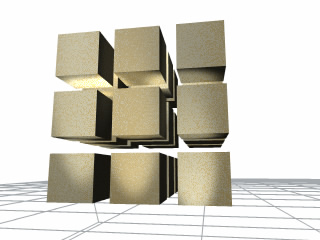
Volume analogues
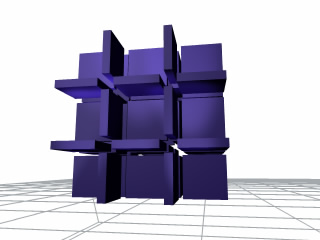
Surface analogues
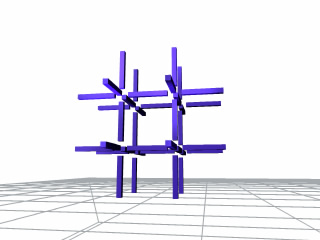
Line analogues
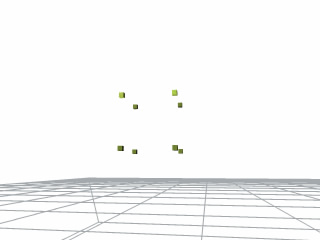
Point analogues
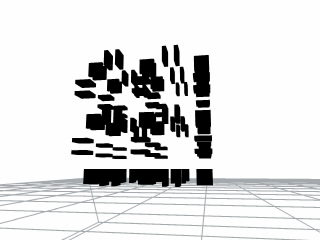
"Washers"
Third is pair a linear structures running through the centres of the
volume and point analogues
respectively.
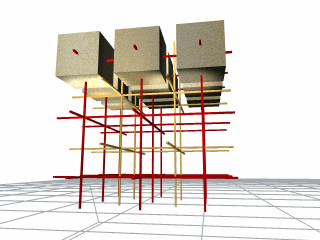
Linear structures
Fourth is a set of positioning elements to assist in positioning elements
with respect to each other.
There are two kinds of such elements. The eight cubes that share a centre
with the point analogues can be used to locate all the analogue elements.
With these cubes, the volume analogues share corner points, the surface
analogues share midpoints of edges, the line analogues share centroids
of faces and the point analogues share volume centroids. The other kind
of element locates the washers.
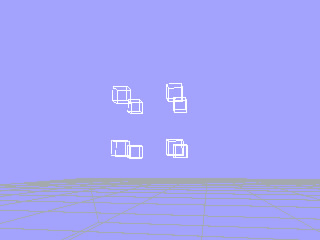
Positioning elements for analogues
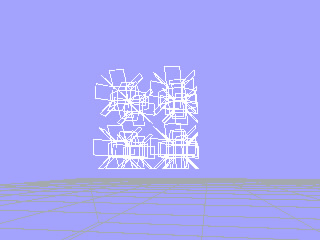
Positioning elements for "washers"
Fifth is the ground plane.
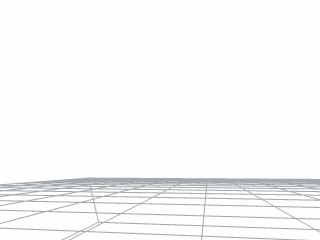
The ground plane
For this tutorial, it suffices to make your compositions by removing
objects from the overall complete form. You may wish to make more radical
transformations of the object in your search for compelling forms.
|
